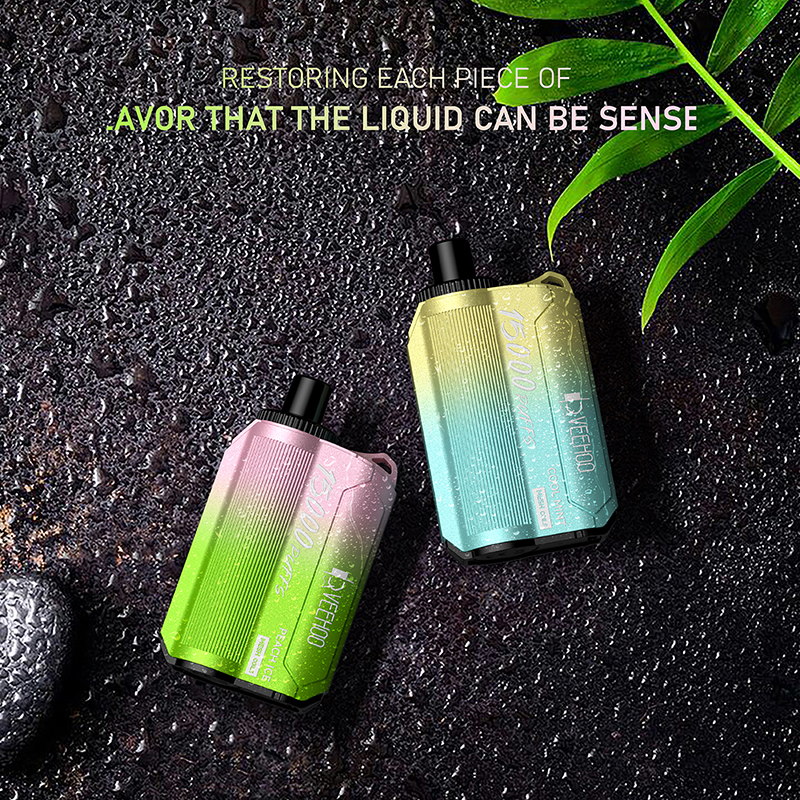In April 2025, a special tension filled the air in Utah, USA – not from religious gatherings, nor from political debates, but from a war on “flavor”. With the ruling of federal judge David Barlow taking effect, this state known for its Mormon culture officially joined the ranks of the US flavored e-cigarette ban, and almost all fruit-flavored and candy-flavored e-cigarette products disappeared from legal shelves overnight. However, this policy aimed at protecting teenagers from the temptation of nicotine has spawned an unexpected consumption frenzy in the state border area, and the well-known e-cigarette brand VEEHOO is at the forefront of this business and policy tug-of-war.
As early as February 2024, the Utah Senate passed SB 61 with an overwhelming vote of 20:3, which not only prohibits the sale of most flavored e-cigarette products, but also requires retailers to register e-cigarette products and face heavy fines. At the time, e-cigarette store owner Brandon Gunn warned that this would “destroy” Utah’s e-cigarette industry, and Senator Todd Weiler pointed out that this was an “anti-business bill.” A year later, when the ban was actually implemented, the prophecy came true halfway – the shelves of e-cigarette stores in the state did become monotonous, but retail stores in border areas ushered in unprecedented customer traffic.

“You can buy mango, strawberry and bubble gum flavored e-cigarettes in Idaho by driving 40 minutes from Salt Lake City.” An unnamed consumer told reporters, “It’s like a replay of the history of buying alcohol across state borders during the Prohibition period.” This phenomenon is not unique to Utah. As early as 2019, when New York State implemented a similar ban, there were reports that some consumers turned to neighboring states or the black market to buy banned products. In this storm, the e-cigarette brand VEEHOO faced a difficult choice. As an important player in the industry, VEEHOO has always been loved by young adult consumers for its diverse flavor options. Utah’s ban forced it to readjust its product line, retaining only a few products such as menthol and tobacco flavors that are allowed to be sold.
However, VEEHOO’s marketing department has also keenly discovered new business opportunities. It has been observed that the brand has recently increased its marketing efforts and inventory supply in states surrounding Utah, especially in border towns in Idaho, Arizona and Colorado bordering Utah. This strategy is similar to what e-cigarette companies did in response to the New York ban in 2019, but on a more systematic scale.

“We respect the legislative choices of each state, but at the same time we have a responsibility to provide adult smokers with harm-reducing alternatives.” A VEEHOO spokesperson said, “We are strengthening compliance training at retail outlets in border states to ensure that products are not sold to minors.” This statement echoed the initial concerns of supporters of the Utah ban – protecting teenagers from the temptation of tempting flavors.
Utah’s ban is not an isolated incident, but part of the stricter regulation of e-cigarettes in the United States in recent years. From New York’s “emergency executive order” in 2019, to the FDA’s restrictions on flavored cartridges in 2020, to the flavored tobacco ban passed by Denver, Colorado in early 2025 and effective in 2026, governments across the United States are taking increasingly tough measures to control the e-cigarette market.
The logic behind these bans is similar: attractive flavors are marketed to teenagers, leading to a surge in the use of e-cigarettes by minors. Data shows that more than 3.6 million middle school students in the United States used e-cigarettes in 2018, and although the rate of e-cigarette use among teenagers in Utah fell from 12.4% to 7.4% between 2019 and 2023, legislators believe that further measures are still needed.
However, the ban also brought unexpected consequences. Retailers in Utah are worried that this will stimulate the development of the black market, which may increase the risk of minors obtaining inferior products. The emergence of a border consumption boom further highlights the challenges brought about by regional policy differences – when one state prohibits and neighboring states allow, the regulatory effect is inevitably greatly reduced.

With the ban in Utah taking effect, the adaptation and adjustment of the e-cigarette industry has just begun. The core issue facing brands such as VEEHOO is: how to balance commercial interests and social responsibility in an increasingly stringent regulatory environment? Should they fully expand the market in states that still allow flavored e-cigarettes, or should they transform and develop new products that meet the requirements of the ban?
At the same time, policymakers also need to reflect: Can regional bans really achieve the desired effect? When consumers can easily cross state borders to buy banned products, or even turn to more dangerous black market goods, do these good laws and good intentions create new risks?
The story of Utah is far from over. It is just the latest chapter in the ongoing debate in American society on e-cigarettes. In this complex game of public health, commercial freedom and personal choice, the only thing that can be determined is that when a demand is cut off by legislation, it will always re-emerge in other ways-just like the suddenly busy e-cigarette retail stores on the border of Utah now.
Tags: flavored e-cigarettes, ceramic atomizer core, protect teenagers, veehoo vape
